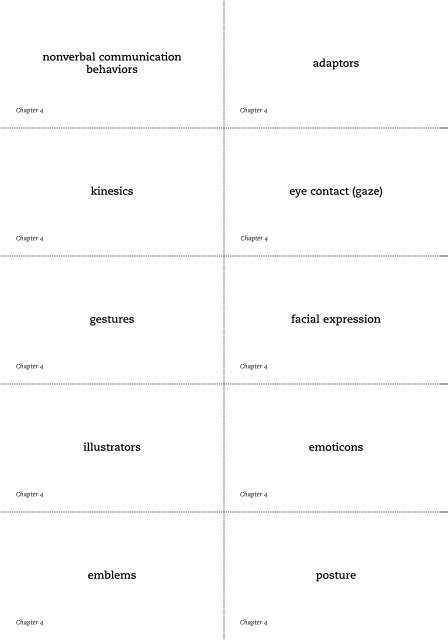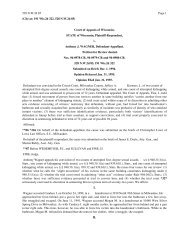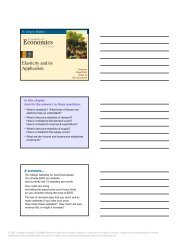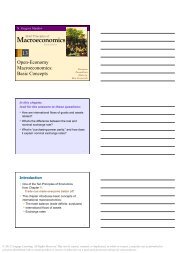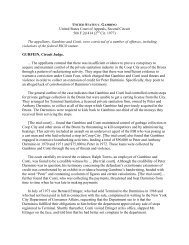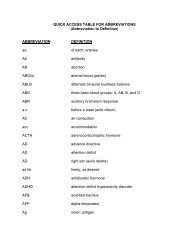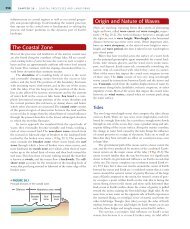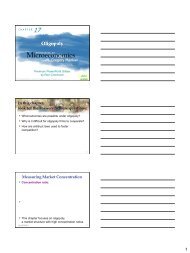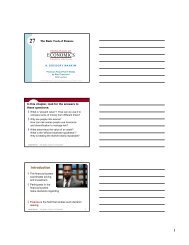nonverbal communication behaviors kinesics gestures illustrators ...
nonverbal communication behaviors kinesics gestures illustrators ...
nonverbal communication behaviors kinesics gestures illustrators ...
Create successful ePaper yourself
Turn your PDF publications into a flip-book with our unique Google optimized e-Paper software.
<strong>nonverbal</strong> <strong>communication</strong><br />
<strong>behaviors</strong><br />
Chapter 4 Chapter 4<br />
<strong>kinesics</strong><br />
Chapter 4 Chapter 4<br />
<strong>gestures</strong><br />
Chapter 4 Chapter 4<br />
<strong>illustrators</strong><br />
Chapter 4 Chapter 4<br />
emblems<br />
Chapter 4 Chapter 4<br />
adaptors<br />
eye contact (gaze)<br />
facial expression<br />
emoticons<br />
posture
<strong>gestures</strong> that respond to a physical need<br />
Chapter 4 Chapter 4<br />
how and how much we look at people with<br />
whom we are communicating<br />
Chapter 4 Chapter 4<br />
the arrangement of facial muscles to<br />
communicate emotional states or reactions to<br />
messages<br />
Chapter 4 Chapter 4<br />
typed symbols that convey emotional aspects of<br />
an online message<br />
Chapter 4 Chapter 4<br />
the position and movement of the body<br />
Chapter 4 Chapter 4<br />
bodily actions and vocal qualities that typically<br />
accompany a verbal message<br />
the interpretation of body motions used in<br />
<strong>communication</strong><br />
movements of our hands, arms, and fingers that<br />
we use to describe or to emphasize<br />
<strong>gestures</strong> that augment a verbal message<br />
<strong>gestures</strong> that can substitute for words
ody orientation<br />
Chapter 4 Chapter 4<br />
haptics<br />
Chapter 4 Chapter 4<br />
vocalics<br />
Chapter 4 Chapter 4<br />
paralanguage<br />
Chapter 4 Chapter 4<br />
pitch<br />
Chapter 4 Chapter 4<br />
volume<br />
rate<br />
quality<br />
intonation<br />
vocalized pauses
the loudness or softness of tone<br />
Chapter 4 Chapter 4<br />
the speed at which a person speaks<br />
Chapter 4 Chapter 4<br />
the sound of a person’s voice<br />
Chapter 4 Chapter 4<br />
the variety, melody, or inflection in one’s voice<br />
Chapter 4 Chapter 4<br />
extraneous sounds or words that interrupt<br />
fluent speech<br />
Chapter 4 Chapter 4<br />
posture in relation to another person<br />
the interpretation of touch<br />
the interpretation of a message based on the<br />
paralinguistic features<br />
the voiced but not verbal part of a spoken<br />
message<br />
the highness or lowness of vocal tone
proxemics<br />
Chapter 4 Chapter 4<br />
personal space<br />
Chapter 4 Chapter 4<br />
physical space<br />
Chapter 4 Chapter 4<br />
artifacts<br />
Chapter 4 Chapter 4<br />
endomorph<br />
Chapter 4 Chapter 4<br />
mesomorph<br />
ectomorph<br />
chronemics<br />
monochronic time orientation<br />
polychronic time orientation
muscular and athletic body type<br />
Chapter 4 Chapter 4<br />
body type that is lean and has little muscle<br />
development<br />
Chapter 4 Chapter 4<br />
the interpretation of a person’s use of time<br />
Chapter 4 Chapter 4<br />
a time orientation that emphasizes doing one<br />
thing at a time<br />
Chapter 4 Chapter 4<br />
a time orientation that emphasizes doing<br />
multiple things at once<br />
Chapter 4 Chapter 4<br />
the interpretation of a person’s use of space<br />
the distance you try to maintain when you<br />
interact with other people<br />
the physical environment over which you exert<br />
control<br />
objects and possessions we use to decorate the<br />
physical space we control<br />
round and heavy body type


